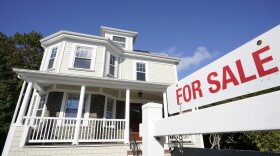The Black population in Greater Boston is growing and becoming more diverse, according to a new report by Boston Indicators, the research arm of the Boston Foundation.
The report, done in partnership with Embrace Boston, examines the demographics, socioeconomics and migration patterns of the region’s Black population. Here are five key takeaways from the report:
The region’s Black population is growing — and moving outside of Boston
Greater Boston’s Black population has grown steadily over the last 40 years. That growth is not happening in the city of Boston, but instead in communities such as Brockton, Randolph, Lawrence and Lynn. Almost two-thirds of the region’s Black population now lives outside of Boston, according to the report.
“Boston is no longer the name of the game in terms of the Black population in Massachusetts,” report coauthor James Jennings, and professor emeritus of urban and environmental policy and planning at Tufts University, told WBUR. “In 1980, for example, 76% of all Blacks in Massachusetts lived in Boston. Today, that figure is 36%.”
For decades, Black folks had flocked to Boston during the Great Migration as they fled racial violence in the South and sought better employment opportunities in the North. But in more recent years, things like high housing costs have driven Black residents to other cities and towns outside of Boston. This suburbanization of the Black population mirrors national trends and a previous report on the racial makeup of Greater Boston.
Greater Boston’s Black population is more diverse than the Black population nationally
The region’s Black population growth is also a reflection of increased immigration. While the region has long had a large immigrant population, such as people from the Caribbean, the number of Black foreign-born residents has grown dramatically since federal immigration restrictions were eased in 1965. And that growth has been faster than the national average.
About 40% of the region’s Black population was foreign-born as of 2020 — about four times as high as the national average and more than any large metro area in the U.S. — according to the Boston Indicators report. These populations include, among others, Haitians, Cape Verdeans, and Nigerians.
The diversity within the Black population has always been there, according to Jennings, but there’s been an “explosive growth” of Black immigrants and Black people who identify as multiracial and multiethnic, such as Afro-Latinos.
The Afro-Latino population has doubled in the last 20 years
Much of the growth of the Black population in Greater Boston has been driven by Afro-Latinos — particularly residents with Dominican and Puerto Rican origins — according to the report. The population of Afro-Latinos more than doubled from 2000 to 2020 in Greater Boston — going from 26,328 to 64,536 respectively — the report found. This population also nearly doubled in the city of Boston in the same time period, going from 11,760 to 23,259 according to the report.
It’s important to note the Boston Indicators report also reflects a difference in how certain populations like Afro-Latinos are counted in research. Other studies likely obscure this group by focusing on people who only identify as Black. Such approaches make Afro-Latinos “invisible,” Jennings said. The Boston Indicators report looked at all people who identify as Black, including those who may also identify as Latino, and those who identify as Black and another race on census forms.
“Race in America has always been about Black, white or Hispanic,” Jennings said. “When we approach race in such static terms, we lose a lot of the important nuances and data that really gives us a better understanding of what the Black population is today.”
There are income gaps within Black populations
The report found differences in income within the region’s Black population. Foreign-born Black families tend to have the highest median household incomes among the region’s Black population. For example, researchers found the median household income for Nigerians is roughly $77,000 a year, while the median household income is roughly around $50,000 for African Americans and around $40,000 for Black residents from the Dominican Republic or Puerto Rico.
This provides a different picture than the famous 2015 Boston Fed study that found the median net worth for Black families in Greater Boston was just $8. Of course, net worth is a different type of measurement than median income. It’s also worth noting the complicated story behind the Boston Fed study, which did examine some groups within the Black population and still found big disparities.
The Black population overall lags in homeownership — and other key measures of wealth
While there are some nuances within the region’s Black population when it comes to socioeconomic measures, there are significant challenges for Black residents overall when compared to other racial groups.
Take homeownership, for example. The gap in homeownership is large for Black residents even when comparing families with similar incomes, the report found. And Greater Boston has an even larger racial homeownership gap than the country as a whole, researchers said. This gap is critical because owning a home is the primary way most Americans build wealth — and in turn homeownership is a major driver of the racial wealth gap. These gaps reflect a long history of discriminatory housing policies that have made homeownership more difficult for Black families, the report noted.
The report also noted racial gaps in business ownership in Greater Boston with Black residents owning just 1.9% of small businesses in the region.
Jennings said it’s important to continue to document such inequities with detailed demographic data to help inform policy and conversations about how to address these challenges.
“There’s so much ignorance about the Black experience in this country that it’s important to uncover it,” Jennings said.
This article was originally published on WBUR.org.
Copyright 2023 WBUR. To see more, visit WBUR.




